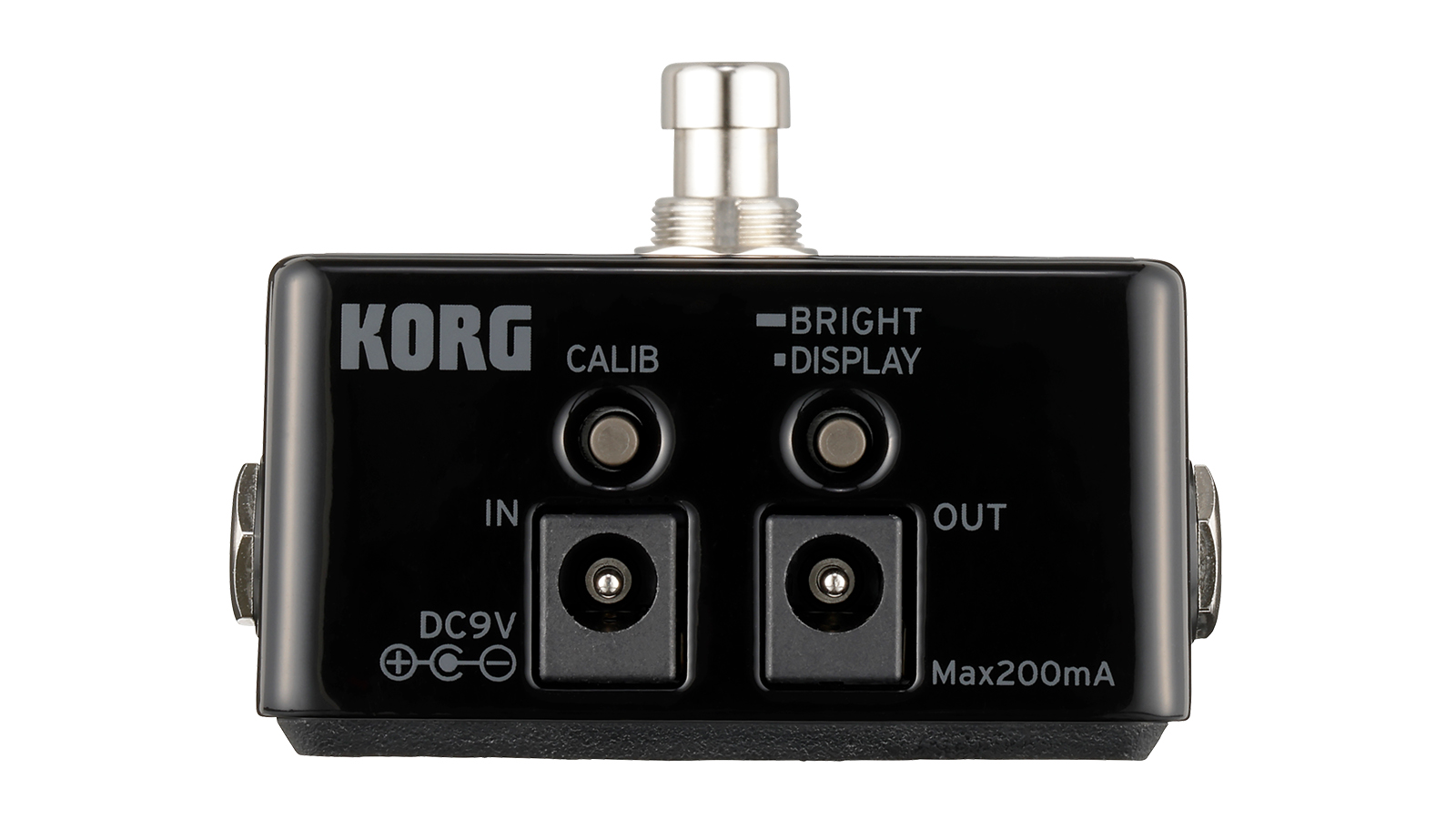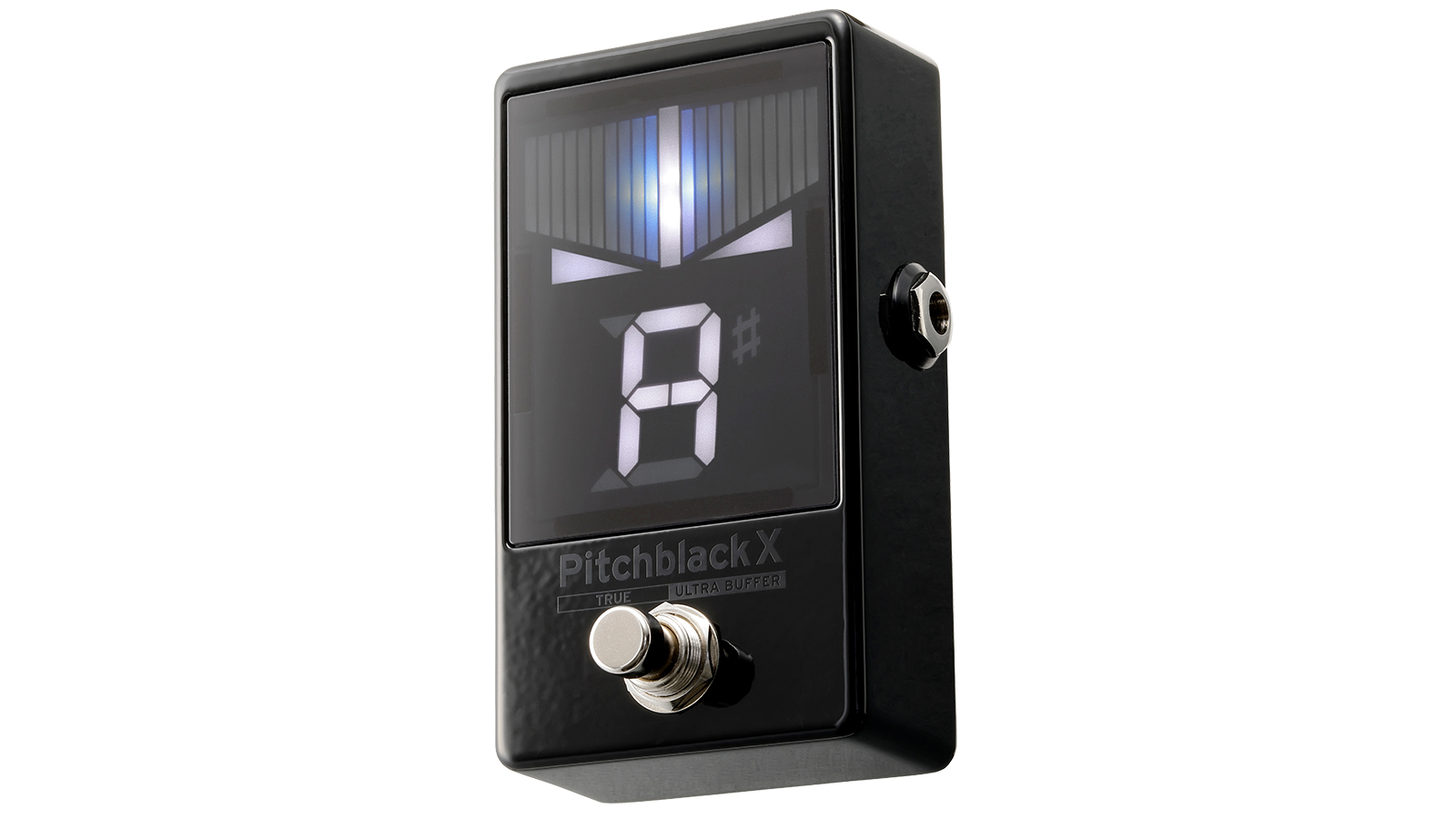
The Korg Pitchblack X is a tuner pedal aimed at guitarists, but it will likely work with a few different instruments. It’s a pretty standard pedal size, though smaller versions are available should you want something that takes up less pedalboard real estate.
The first thing to note upon unboxing is how sturdy it feels. The aluminium casing feels great – solid, well built and like you wouldn’t mind stomping on it night after night. It’s even finished in a scratch-resistant coating. The jack connections are located on the side, and the power is on the top – it’s not really a pro or a con, but it’s definitely worth considering when you’re building your pedalboard.

In use, the thing I loved the most is how big the display is. Regardless of how good or bad your eyesight is, you’re going to see this. If you’re playing on stages fogged out with dry ice, or there’s all sorts of lights and lasers going off, the display on the Pitchblack X is nice and big so you can still clearly see what it’s telling you.
It’s also impressively bright, and you have two brightness options so you can choose which one works best for you. Personally, I’d stick it on the brightest setting and leave it – this also means it’s visible if you’re playing outdoors.
When it comes to tuning, the Korg Pitchblack X is user-friendly, too. There are four different display modes – including strobe, for those that like that – so you can tweak things to personal taste. It works exactly how you’d expect; once your string is in tune, two triangles either side of the note flash so you quickly know that it’s done and you can move onto the next string. Simple.
In terms of accuracy, it’s spec’d as having a +/- 0.1 cent range which is as good as you can ask for really. If you’re playing or recording alongside synthesized instruments or tuned vocals – basically anything that’s perfectly in pitch – then having an accurate guitar tuner is really important. In this scenario, the Pitchblack X has you covered. I also found that it worked very well on bass, even in slightly lower tunings.

It’s got a few additional features that will no doubt be of interest to some players. There’s a switch inside that enables you to choose between true bypass and ‘Ultra Buffer’. How much difference there is between their ‘ultra’ buffer and a normal buffer, I’m not sure, but it is nice to have the choice. If you’re running long cables, or using a number of pedals, then you’ll likely want to use the buffer to keep tone degradation to a minimum.
It can be powered either with a 9V battery or power supply and, like many other tuners, it has a power output socket. This means you can use your Pitchblack X as a mini power supply. The output is rated at 200mA, so you could daisy chain a few low powered pedals off it, or just one slightly more power-hungry pedal – either way, it’s a nice option to have. The tuner itself only has a draw of 28mA so it’s not sucking up too much juice.
Verdict
This is a great pedal tuner, at a reasonable price. It’s built to a very high standard, and will no doubt last a long time on anyone’s board. The display is clear, big and easy to read which is super important. It’s accurate and it functions well when you need to tune up quickly.
Specifications
- Accuracy: +/- 0.1 cent
- Connections: Jack in, jack out, DC 9V in, DC 9V out
- Display modes: Regular, strobe, half-strobe, mirror
- Power: 9V DC or 9V battery
- Power consumption: 28mA
- Weight: 248g
- Visit: Korg







